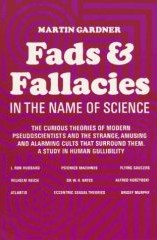
A kind review of my first book,"The Legend of Salt and Sauce", was published in the most unlikely of places, issue 44 of "Animals and Men" last summer. The magazine is connected to the Fortean group and has a website http://www.cfz.org.uk/ dealing in zoology and cryptozoology. Being a sceptic the last time I read about the Forteans was in the now classic "Fads and Fallacies" written by Martin Gardener.
 Image via Wikipedia
Image via Wikipedia
 Image via Wikipedia
Image via Wikipedia
The Legend of Salt and Sauce: The Amazing Story of Britain's Most Famous ElephantsBy Jamie Clubb and Jim Clubb
Paperback: 148 pages Publisher: Aardvark Publishing Language English ISBN-10: 187290436X ISBN-13: 978-1872904368 Salt and Sauce were two Asian elephants owned, for a while, by the elephant trainer George Lockheart. They had been wild caught in the 1890s and brought by the legendary animal dealer Carl Hagenbeck.
They were part of a group of performing elephants known as the 'Cruet', others being called Pepper, Mustard and Vinegar. What made Salt and Sauce so special is the conflicting stories about their nature and the long life they spent together in zoos and circuses under differing owners. Ultimately they caused the death of two of their owners.
Father and son team of Jamie and Jim are well known in the zoo and circus world as experienced keepers, trainers and zoo historians.
In this unique book they have tracked down old photographs and records of the animals throughout their lives. They also interview folk who had first hand knowledge of the animals.
Some recall the beasts as unpredictable and dangerous, other as placid and loveable. What was the real story of the elephants that were known to have killed two men? Were they panicked into such actions, were the animals genuinely aggressive, or was it a case of poor training?
As a zookeeper myself and one who has lost a friend through an elephant attack, this proved to be a highly interesting book. Not only for looking into the circumstances behind the two incidents, but for the long and engaging story of the career of the elephants who were still working in the 1950s.
All in all a remarkable book in the same vein as David Barnaby's 'The Elephant that Walked to Manchester'. A must for all interested in zoo and circus history. RF
![Reblog this post [with Zemanta]](http://img.zemanta.com/reblog_e.png?x-id=0618f1a0-1ed4-42b3-b4a5-df774adcfb83)